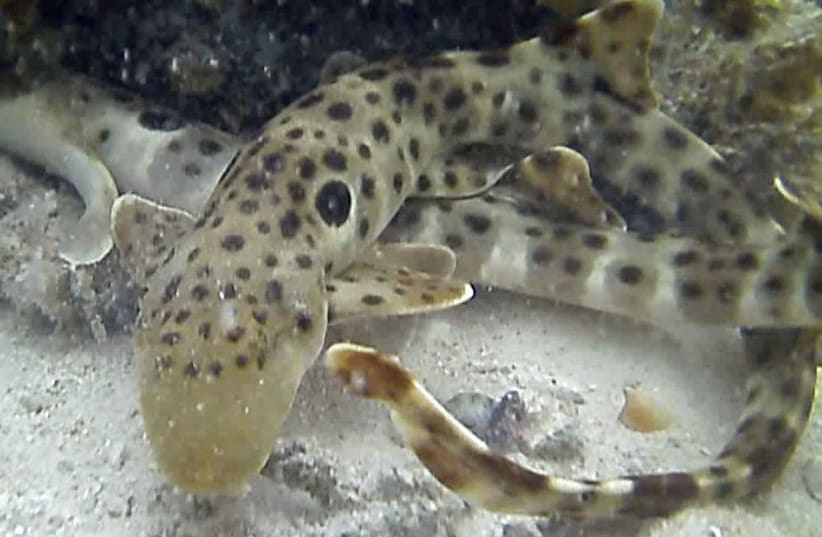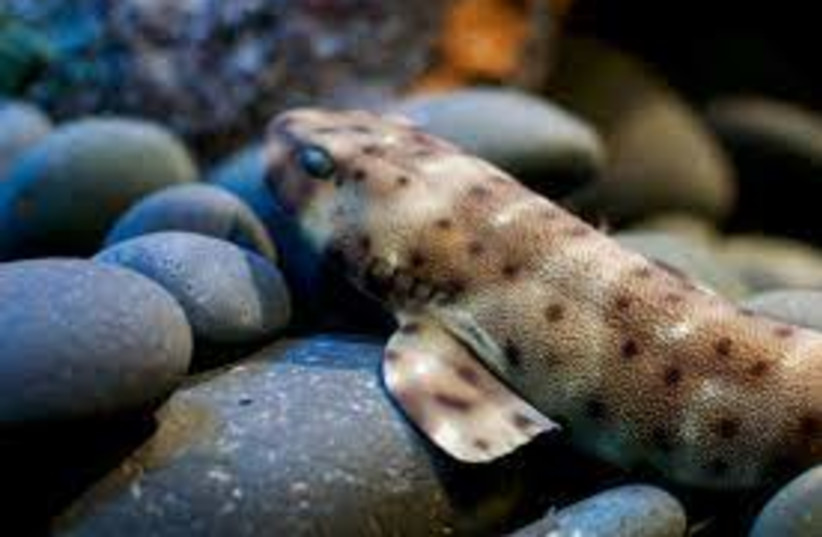A new study has discovered a species of shark with a previously unknown ability to walk, a unique ability that enables them to hunt in places that other sharks cannot, like on the beach.
On May 3, when night fell, scientists in Papua New Guinea discovered something amazing: A walking shark. By using his fins to drag himself on the ground, the small tiger-striped shark was seen shining across a tide pool that contained barely enough water to surround its tummy and moving like a sea lion.
The shark was an epaulette shark of the Hemsicyllium Ocellatum species which is unique among shark species in that it can move on land.
Forest Galanta, a biologist and conservationist, lately shared rare photos of this unique species in a new special documentary on the Discovery channel in honor of Shark Week.
"This is the first time in history that one of the Papuan epaulette sharks was recorded walking," said Galanta in the program. "It's so amazing.
How did epaulette sharks learn to walk?
Scientists assume that the epaulette sharks developed the ability to walk because it helps them look for food in places where other sharks cannot survive.
"These developments allow them to survive better and give them an environment where they are safe and can get food," said Florida's Natural History Museum's shark research manager Gavin Naylor.
Epaulette sharks grow to one meter and swim into shallow coral reefs in order to hunt crabs and other invertebrates - their preferred food. When the tide goes down, they are happy to spend time in the shallow pools, "but when they are done, they are trapped," said Naylor.
"What they've learned to do is to climb among the corals and bounce themselves to the next tide pool."
Gavin Naylor
The sharks can drag themselves 30 meters or more across land, and their fin walking isn't the only evolution that allows them to do this. This species can survive in situations with low oxygen and spend and hour or more on land with only one breath, according to Live Science. This ability helps the epaulettes thrive in the low-oxygen waters of the tide pools.
Epaulette sharks probably developed the ability to walk in the last nine million years, according to scientists who took part in a study from 2020 that was recently published in Marine & Freshwater Research. This is very fast for sharks.
To put this in perspective, hammer sharks, one of the youngest species of sharks, developed 45 million years ago, according to the London Museum of Natural History.
"Epaulette sharks may be able to create new species at an amazingly fast rate," said Naylor. "Because of their portability, small communities often become isolated. A river or other geographical barriers can change enough to isolate a small group of sharks from the general population.
"With time, these communities can become genetically different because their genes go through random mutation, and they adapt separately from other genetics."
Gavin Naylor
One big question that's left regarding these sharks is how such a small genetic variety in the populations can create such big differences in their looks. The patterns of epaulette sharks are so unique that there are no two that are completely identical. Naylor and other scientists suspect that the epaulette sharks can change their patterns at will, but this hasn't been proven.

